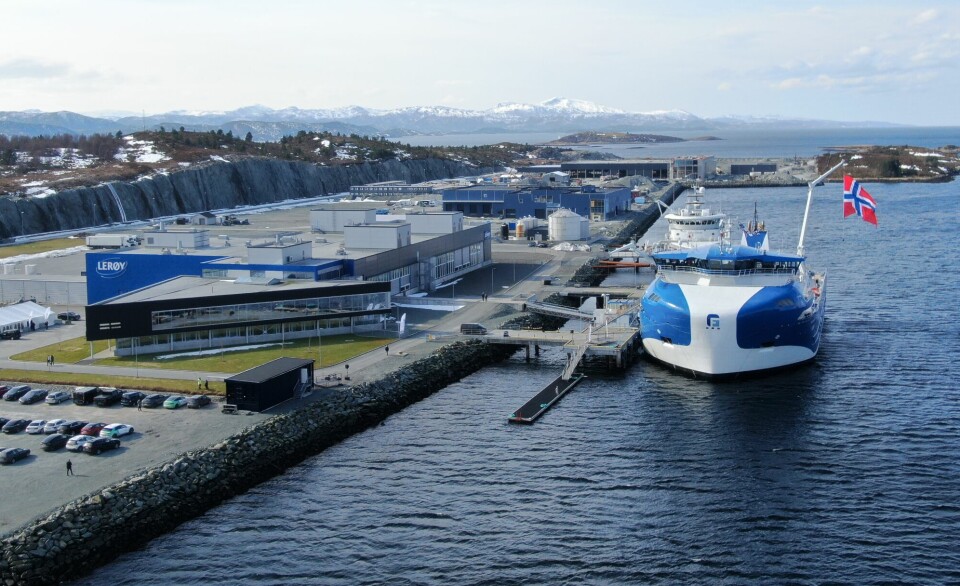
World’s biggest wellboat christened at processing facility
Gåsø Høvding will unload fish using electricity from new onshore power plant, reducing emissions
The world’s largest volume wellboat, the Gåsø Høvding, has been christened by owner Frøy ASA at a processing facility operated by salmon farmer Lerøy Midt, highlighting the vessel’s state-of-the-art design.
The Gåsø Høvding can rely entirely on electricity when it is connected to shore power, and a new power plant at the processing facility on Jøsnøya on Hitra will provide it.
“This investment is one of many measures we are taking to achieve the company’s goal of reducing climate emissions by 46% by 2030,” said Harald Larssen, general manager of Lerøy Midt. He said that the project is a close collaboration between Lerøy Midt, Frøy ASA, and NTE, which designed and built the onshore power plant.
The Gåsø Høvding, which has a well volume of 7,500 cubic metres, will deliver salmon to the Jøsnøya processing facility, and has the capacity to load more than a thousand tonnes of live fish per hour.
No diesel
At Jøsnøya it will have full operation on shore power without using diesel during direct unloading of the harvested fish.
“This is a significant investment for the future. The fact that we can use shore power instead of diesel for such large and energy-intensive operations is worth its weight in gold for both the environment and the whole seafood industry,” said Andreas Moe, operations director for Brønnbåt in Frøy ASA.
Jakob Hæhre Krogsrud, marketing manager at NTE, said: “This is a ground-breaking project. The new shore power facility for wellboats is the largest of its kind in the aquaculture industry, and I am convinced that it is an important step on the way to a greener industry.”
Norwegian state green energy organisation Enova has met up to 40% of the budgeted investment costs.
Another Frøy boat, Kristiansund, which is also contracted to Lerøy, was also christened on the same day at Jøsnøya.






















































